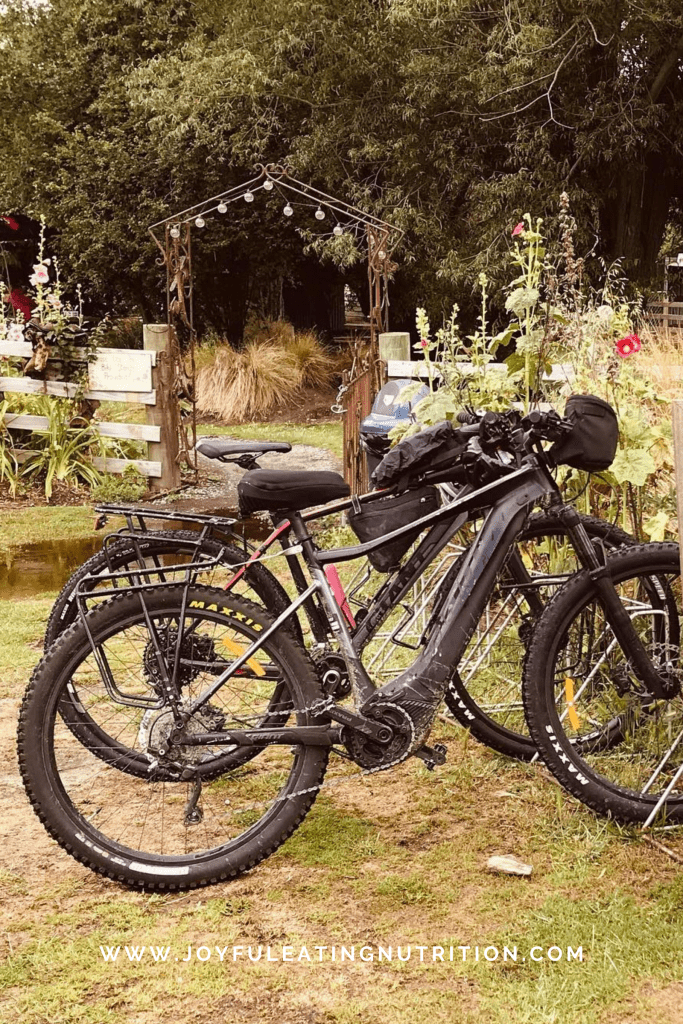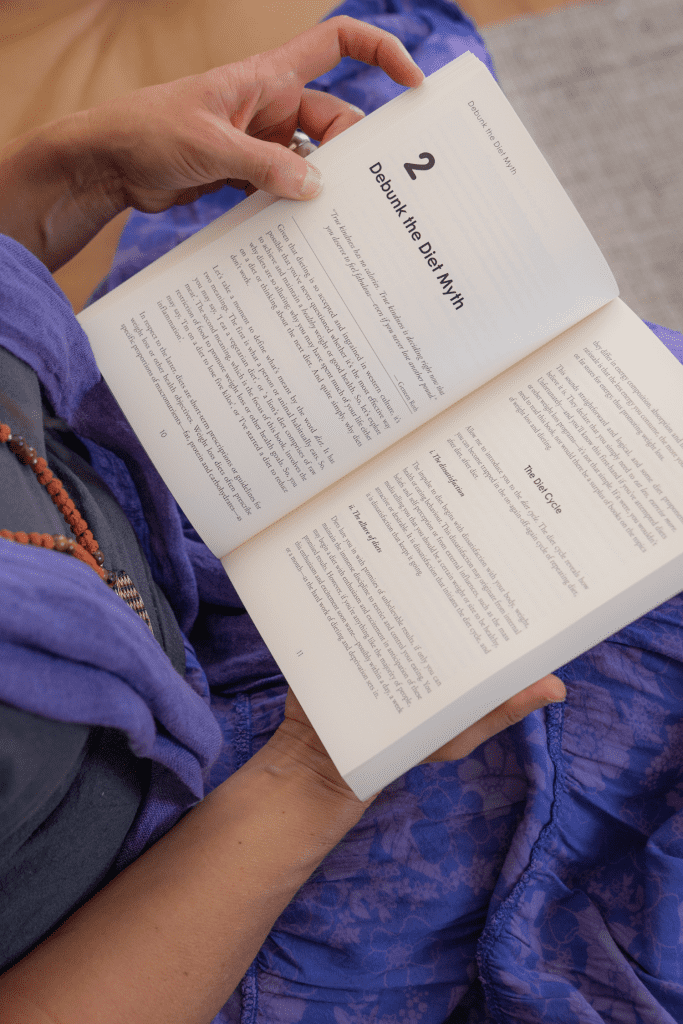How did I shift from being an obsessive over-exerciser to a balanced and intuitive approach of joyful movement? It coincided with transforming my relationship with food, as the two are inextricably intertwined.
In my twenties, I was an obsessive over-exerciser. I could do one to two hours of aerobics classes a day, ride my bike to work and still feel the need to do crunches when I got home (or go out for another gym class). I remember doing a twenty-two-kilometre hike and then racing to the gym for a high-intensity aerobics class.
You may wonder, isn’t exercise or being fit a good thing?
The thing is, fitness is only one aspect of our health. If our exercise pursuits influence other aspects of our lives or cause us injury or anxiety, we are likely to have entered an ‘unhealthy’ association with exercise.
Yes, exercise can become unhealthy
Some people may develop an unhealthy obsession with exercise and way more extreme than I did. For me, if I had to skip an exercise session, I would feel angsty. I would almost fear that I would gain fat and lose tone.
I remember trading in my motorbike for a road bike because I believed burning energy to get to the coffee shop made more sense than going by engine power. I decided to improve my swim stroke so I could enter triathlons for a weekend activity. I entered a half marathon, although running has never felt natural to me—I’ve always felt like it’s a heavy struggle.
I had a compulsive rather than healthy association with exercise, which reflected my relationship with food.
I obsessively exercised because I didn’t want to go without ‘treats’. I exercised to compensate for or in anticipation of my eating.

Exercising for appearance
And the thing is, I never felt my body was as trim as it should be with all the exercise that I was doing. I never looked like the stereotypical elegant runner or toned aerobics fiend.
I was doing it to look a certain way. Even if I convinced myself it was for health. And I am not alone in this.
We have confused appearance and health.
We’ve been led to believe that ‘healthy’ looks a certain way. It’s understandable, with sayings such as ‘strong is the new skinny’ or ‘healthy is the new skinny’.
This way of thinking is the consequence of diet mentality.
Exercising to eat (‘bad’)
I began to explore my relationship with food and see how my food rules were sabotaging me into an all-or-nothing mindset or the ravenous hunger that led to excessive and fast eating when I allowed myself ‘treats’. The increased appetite from exercise didn’t help any. The more I exercised, the hungrier I felt (duh). I always felt like it was a struggle to keep my eating under control.
Releasing the diet rules to form a healthier relationship with food
As I let go of my fear of food and my body, which I also discuss in my blogs, Orthorexia: How it’s possible to take healthy eating too far? and Confessions of a Raw Food Diet Escapee, I found I could eat more and exercise less with little change to my body’s appearance. I found I didn’t need to be in this stressful and anxious state to maintain what I thought was health.

Around this time, sixteen years ago, a friend invited me to a yoga workshop. I admit that at first, I was frustrated by the slow movement and holding positions. I was used to rigorous aerobics. Yet, I felt an immense sense of calm during the breathing exercises. So, I decided to incorporate yoga into my hectic exercise routine to help me switch off and relax.
However, the more I practised yoga and explored my relationship with food, the more I found my association with exercise became more relaxed, intuitive and joyful. I found myself shifting from obsessive over-exercising to moving in a more balanced and intuitive way—I was embracing what I now call joyful movement (although it is not a term I coined).
What is joyful movement?
Joyful movement is any form of movement you do for the purpose of feeling alive in your body. It involves feeling into your body as you move to increase your energy or relieve pain. It is a form of self-care.
Joyful movement is a way to feel strong, flexible and confident. And to replenish your energy so you can go about your day in a more upbeat way.
Find your own joyful movement
What movement brings us joy will differ for each of us. It could be dancing around your living room, jazzercize, horse riding, yoga, or walking outdoors. It is definitely not the same for everyone.

How to practice joyful movement
Joyful movement is not about following a set of rules to achieve a certain outcome.
It could be practised as a way to feel more limber or to relieve pain. However, the principles of joyful movement can also be applied to training to run a marathon. Training to achieve a goal can take away the joy when we are in a must-achieve mode rather than listening to our body and focusing on the sensations of the movement. We can still aspire to complete a race, but even that involves one foot in front of the other. And if we aren’t enjoying the process, we must ask ourselves, what is it for?
To practise joyful movement, no matter what movement you choose to partake in, involves:
- having no agenda for reshaping your body;
- not moving to earn or make up for eating;
- not forcing or powering through, which could cause injury or influence your ability to undertake other tasks and responsibilities;
- moving to feel alive in your body, during and after movement
- moving as frequently or infrequently as you like, based on how it makes you feel and your total lifestyle.
Share your joyful movement practice
I mentioned earlier that joyful movement for me mostly now involves walking, Pilates, yoga, dance and occasional cycling. I share my approach to joyful movement in the blog My Joyful Movement Practice.
For my husband, marathon swimming, running and cycling through the mountains bring him joy.
What movement do you do that brings you joy while doing it or afterwards? Share in the comments below.
Want to explore your relationship with food and how it may impact your relationship with exercise?
Check out my other blogs and book, Joyful Eating: How to Break Free of Diets and Make Peace with Your Body.


